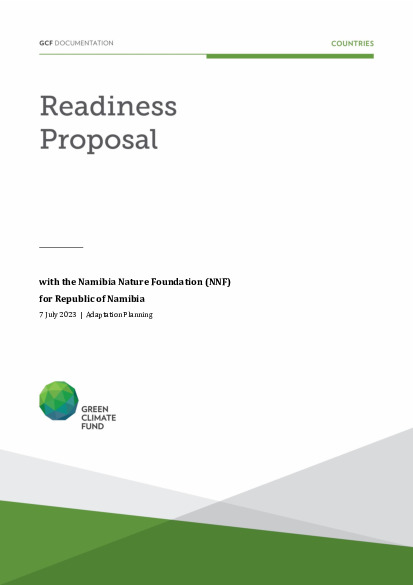Strengthening Adaptation Planning and Coordination in Namibia
Namibia’s socio-ecological characteristics make it one of the most vulnerable developing countries to the impacts of climate change. Namibia’s climate is characterised by regular dry spells, persistent droughts, and sporadic severe flooding and the frequency of these events has increased. Over the past 40 years, maximum temperatures, and the number of days exceeding 35 degrees Celsius have increased, and Namibia experienced three intense drought events in 2013, 2015 and 2019. The year 2019 was the driest in 90 years. Increased aridity is putting further pressure on water availability in Namibia, an already limited, unreliable and scarce resource. Key sectors such as human health, water resources, agriculture, food security, biodiversity, ecotourism, coastal zone management, and human settlements as well as trade and industry are vulnerable to climate change. Approximately 67% of the Namibian population live in rural areas and depend on rain-fed subsistence agriculture, a disproportionate number of which are women due to male migration to urban centres in search of employment opportunities. The economic outlook for the country forecasted growth figures of 0.9%, 3.4% and 3.7% for 2021, 2022 and 2023 respectively and Namibia has been in recession since 2016. Covid-19 further exacerbated the economic situation, with Namibia experiencing an historic contraction of growth by 8.5% in 2020. The country’s debt-to-GDP ratio stands at 67% and is expected to rise, dampening further Namibia’s capacity to strengthening resilience against climate related risks.
The Republic of Namibia ratified the United Nations Framework Convention on Climate Change (UNFCCC) as a Non-Annex I Party in 1995 and the Paris Agreement in 2016 and has developed several policies and plans that define its broad strategic priorities in addressing climate change. Existing plans and policies and stakeholder consultations indicate no comprehensive adaptation strategy to drive coordinated and effective action. Gaps in technical capacity, knowledge and tools for adaptation have made it challenging to integrate adaptation into planning at all levels and there is limited engagement of private sector in adaptation initiatives, due to a low awareness and understanding and a lack of procedures that incentivise consideration of climate risks and adaptation needs. Namibia’s Nationally Determined Contributions (NDCs) consider the formulation of a National Adaptation Plan (NAP) as a priority. According to the NDC, the NAP shall serve as the guiding document to implement adaptation actions in Namibia.
